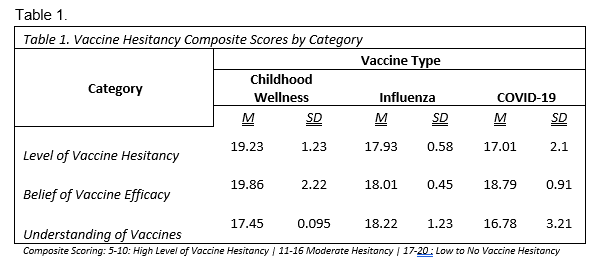Immunizations/Delivery
Immunizations/Delivery 1
604 - Parent and School Staff Vaccine Hesitancy During the 2021-22 Flu Season and the SARS-CoV-2 Pandemic
Publication Number: 604.224
- JD
Julian Dedeaux, PhD (he/him/his)
Assistant Research Professor
University of Kansas School of Medicine
Wichita, Kansas, United States
Presenting Author(s)
Background: Increasing questions regarding vaccination have rapidly become a prominent public health dilemma. Refusal to vaccinate children has allowed previously eradicated diseases, such as measles and polio reemerge across the globe. During the 2021 influenza season, amidst a global pandemic, more information regarding public opinion on vaccinations was needed to tailor strategies to maximize vaccination uptake. Gauging public response to discussions brought about by the media and healthcare professionals was determined to be the best choice for understanding the perceptions, knowledge, and opinions regarding vaccine.
Objective:
The aim of this study was to evaluate the level of hesitancy related to routine wellness, Influenza and COVID Vaccines in school personnel who identified as parents.
Design/Methods:
A prospective, cross-sectional survey was developed to determine the level of vaccine hesitancy in suburban Wichita. The survey consisted of two scales modified from the World Health Organization’s Vaccine Hesitancy Scale (VHS-10) that measured the respondents a) level of hesitancy, efficacy, and understanding of routine wellness vaccines, the influenza vaccine, and the COVID vaccine. Cross-Tabulation (X2) and means comparisons (T-Test, ANOVA) were conducted between demographic factors and the hesitancy measures composite scores; significance set at p< 0.05.
Results:
N=131 surveyed. Categories based on composite scores were above the mean in all categories ( >98%), see table 1. A significant difference in mean composite scores for hesitancy for Childhood Wellness Vaccines [F(2,4)=3.98, p=.032] and the COVID vaccine [F(2,4)=5.84, p=.01] was observed for ‘Source of Vaccine Information’. Post-Hoc testing revealed higher vaccine hesitancy (based on lower mean scores) for those who received their childhood wellness vaccine information from: Family and Friends (M=16.37;SD=1.22), social media (M=12.58;SD=2.29), and Internet Sources (M=11.90;SD=.90) and for the COVID vaccines: social media (M=13.01;SD=1.57), and Internet Sources (M=14.39;SD=1.54).
Conclusion(s): Based on the results, vaccine hesitancy was low within our sample population. However, results indicated individuals who received vaccine and immunization information from family/friends, social media, or websites were more likely to express vaccine hesitancy. This highlights the need for educating against false information and ensuring the most accurate information is made readily available by healthcare providers. Education efforts should be multitiered beyond just provider-patient education. 
